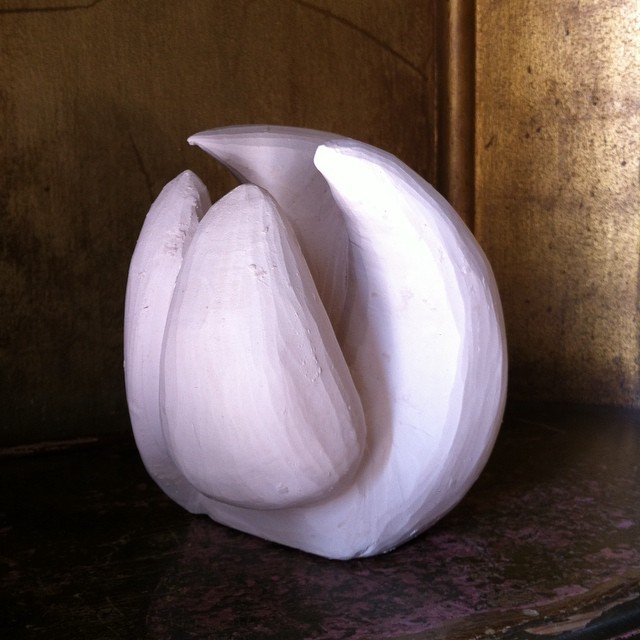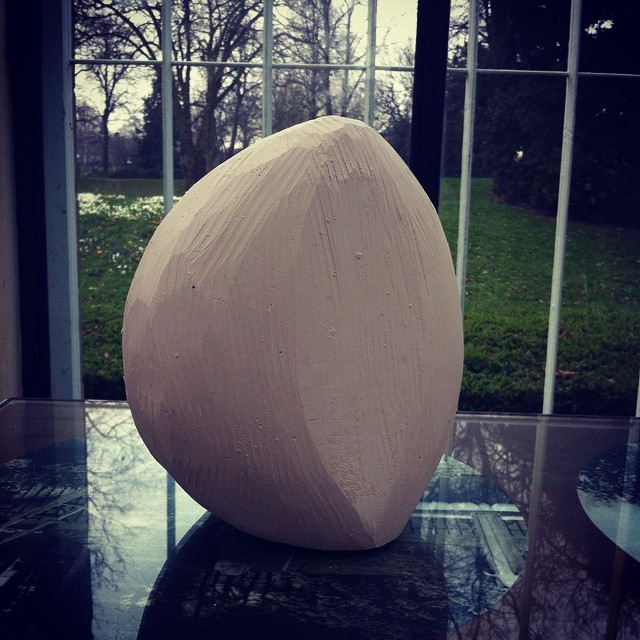The finished hanging installation for Bakewell Old House Museum created from antique cotton thread from John Smedleys archive
Elvaston Castles Gothic Hall, Artist Residency
Hanging Installation
Live Weaving Installation
At the end of March I was asked to create a woven installation within the oldest dwelling in the market town of Bakewell in the heart of the Derbyshire Peak District, the Old House Museum.
The room I was to use is around 500 years old and features wattle and daube walls and beamed low ceilings. I wanted to make reference to the many types of hand weaving that the occupants of the house may have used over the half century, and take inspiration from the the use of loom weights in textile weaving.
Local textile weaving mill John Smedley who’s historic mill is situated near Matlock, Derbyshire generously invited me to visit their archives prior to the live installation. John Smedley are known for high quality knitwear and a rich manufacturing heritage, a luxury brand with roots in the Derbyshire countryside and garments regularly featured in some of the world’s most prestigious fashion magazines. They kindly donated three large spools of antique threads from their archive for me to weave with.
Using a simple wooden frame attached to the ceiling, I began with a single chain stitch on the frame and began adding more stitches, each stitch working their way down towards the floor forming drops.
About the Museum
The building was built In the time of Henry VIII the southern four rooms were built as a tax collector’s house. Ralph Gell of Hopton, near Wirksworth, had taken over the collection of tithes, the tenth of all produce due to the church, and needed a house for his steward, Christopher Plant. The produce, such as oats and wool, was stored in nearby barns before being sold.
In the time of Elizabeth I the house was made much bigger as a gentleman’s residence, with the luxury of an internal toilet or garderobe. The central room has a big fireplace where the cooking was done.
In 1777 Richard Arkwright, the founder of the factory system, built his third cotton mill at Bakewell and divided this house into 5 cottages for workers at the mill. Another was built on.
They were good for their time but by the 1950s the cottages were condemned as unfit for human habitation. They would have been demolished but the Bakewell & District Historical Society was formed to protect the Old House and to use it as a museum.
Within the museum visitors can explore their fascinating social history collection which offers a wealth of learning opportunities and reflects the impact of pivotal events on Bakewell and the surrounding area from Anglo-Saxons onwards. Stepping into the past you can experience how we used to live by exploring the rooms of this original Tudor building.
Artist in Residence
Some of the experimental woven pieces created during my artist residency in Derby’s Historic Arboretum Park.
Photos taken by Howie of Howieography
Artist Residency No.1
For the duration of 2015 I have successfully secured funding from Arts Council England to explore the direct casting processes of solid lost wax casting and hollow lost wax, taking inspiration and lessons from the Bronze age and the Ancient Greek period. This will cumulate into a small collection of new woven bronze work that will become the basis for a solo show in October. During this period of reach and development I will be travelling through Derbyshire to undertake artist residencies in various public places such as Elvaston Castle, Matlock Mining Museum and Cromford Mill to name but a few. With each venue the surroundings will directly influence the creative outcomes.
The first venue on the residency tour is in the city of Derby within the historic Arboretum Park which is due to celebrate 175 years this September. This historic park was the very first publicly owned landscaped park in England. In 1840 the park was commissioned by Joseph Strutt, a former mayor of Derby and noted philanthropist. The landscape architect John Claudius Loudon was employed to design the parks undulating banks, planting and sculptural features. Loudon’s design was of great significance and influential in the design of New Yorks Central Park.
The aim of the residencies is to allow the public to engage directly with the artist and the art work, to see and learn about the exploration of the ancient lost wax technique, see the experiments in surface patterns achieved through hand weaving techniques and examine the collection of wax forms.
Being resident in the park has been a great experience and discovering it’s historic story has been fascinating, the park has had a troubled past but seems to be embracing a new chapter, one of which is the successful residency program now in its fifth year.
My time at the Arboretum has come to an end and I have loved be able to see the park everyday, watch spring arrive through the windows, see the park life and the people passing by. It’s been inspiring and as a result I have created over 50 pieces whilst resident there.













